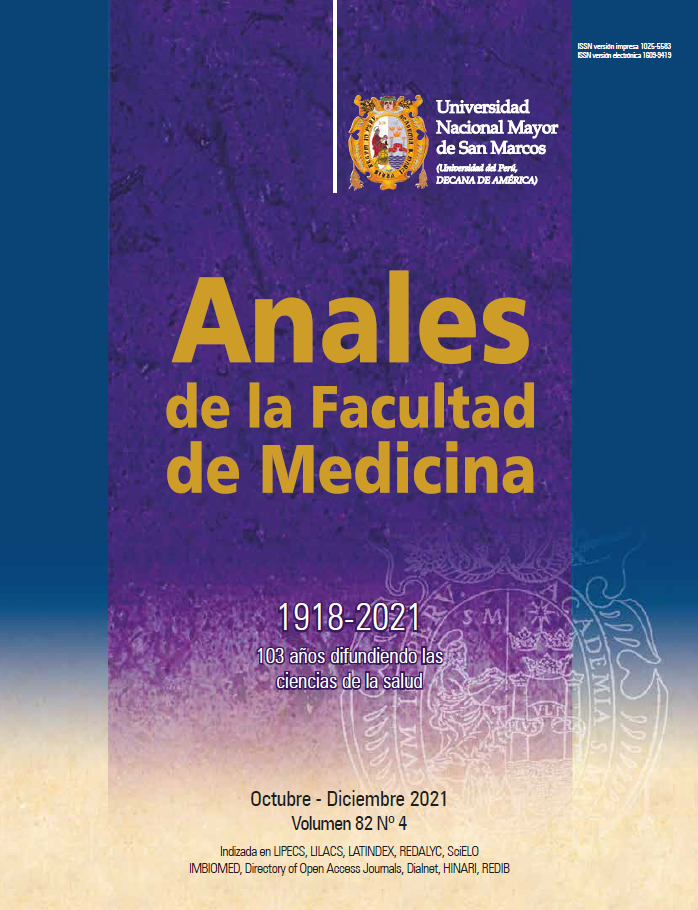Factors associated with nutritional status and risk in older adults in primary care institución
DOI:
https://doi.org/10.15381/anales.v82i4.20799Keywords:
Aged, Nutrition Assessment, Malnutrition, Geriatric Assessment, Primary Health CareAbstract
Introduction. The Peruvian population is aging and this is associated with the deterioration of health. This process can be slowed or accelerated depending on the nutritional status. Objectives. To determine the factors associated with nutritional status and nutritional risk in a group of older adults. Methods. 265 older adults, free of cognitive impairment and able to communicate, were surveyed, cared for in primary care centers. The Mini Nutritional Assessment (MNA) test was applied and weight, height, arm, and calf circumference were measured. According to the score, the categories of the MNA were: ‘malnourished’ <17, at ‘risk of malnutrition’ between 17 - 23.5; > 23.5 ‘normal’. The nutritional status was also evaluated according to body mass index (BMI) with different cut-off points. Results. 79% of the respondents were women; 46% were between 70 and 79 years old. According to the MNA, only one person had ‘malnutrition’, 32.4% had ‘risk of malnutrition’. In contrast, according to the BMI, 50% were overweight according to the PAHO cut-off point and more than 80% were overweight according to the WHO cut-off point. A higher MNA score was found in men, and the ‘Risk of malnutrition’ was associated with higher consumption of medications. Conclusions. The nutritional status of half of the elderly was overweight according to BMI with the PAHO cut-off points, and a third of them had a risk of malnutrition according to the MNA instrument.
Downloads
Published
Issue
Section
License
Copyright (c) 2022 Anales de la Facultad de Medicina

This work is licensed under a Creative Commons Attribution-NonCommercial-ShareAlike 4.0 International License.
Those authors who have publications with this magazine accept the following terms:
- Authors will retain their copyrights and guarantee the journal the right of first publication of their work, which will be simultaneously subject to Creative Commons Attribution License that allows third parties to share the work as long as its author and its first publication this magazine are indicated.
- Authors may adopt other non-exclusive licensing agreements for the distribution of the version of the published work (eg, deposit it in an institutional electronic file or publish it in a monographic volume) provided that the initial publication in this magazine is indicated.
- Authors are allowed and recommended to disseminate their work over the Internet (eg: in institutional telematic archives or on their website) before and during the submission process, which It can produce interesting exchanges and increase quotes from the published work. (See El efecto del acceso abierto ).



